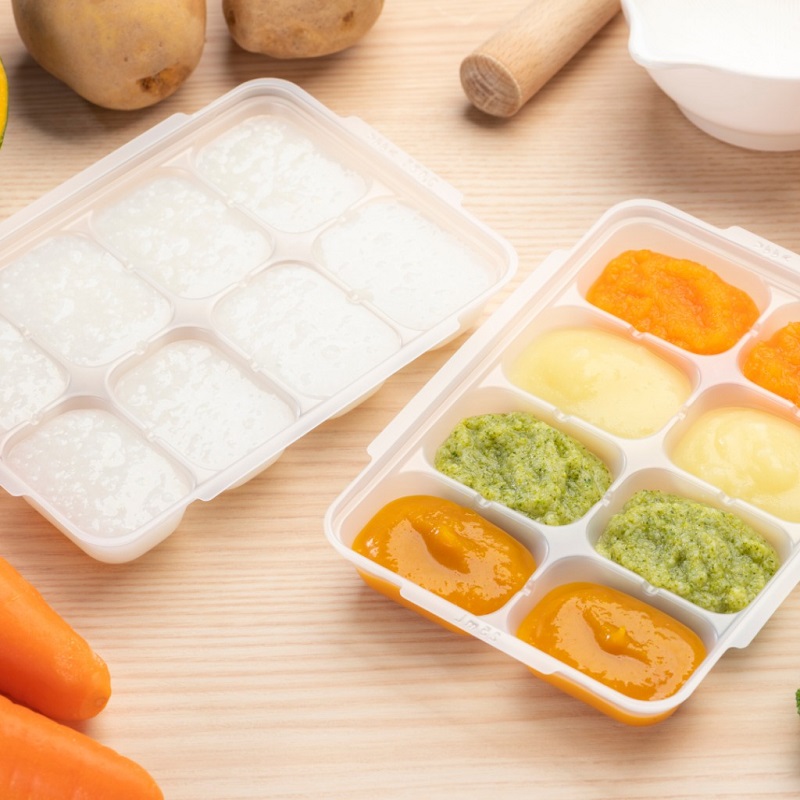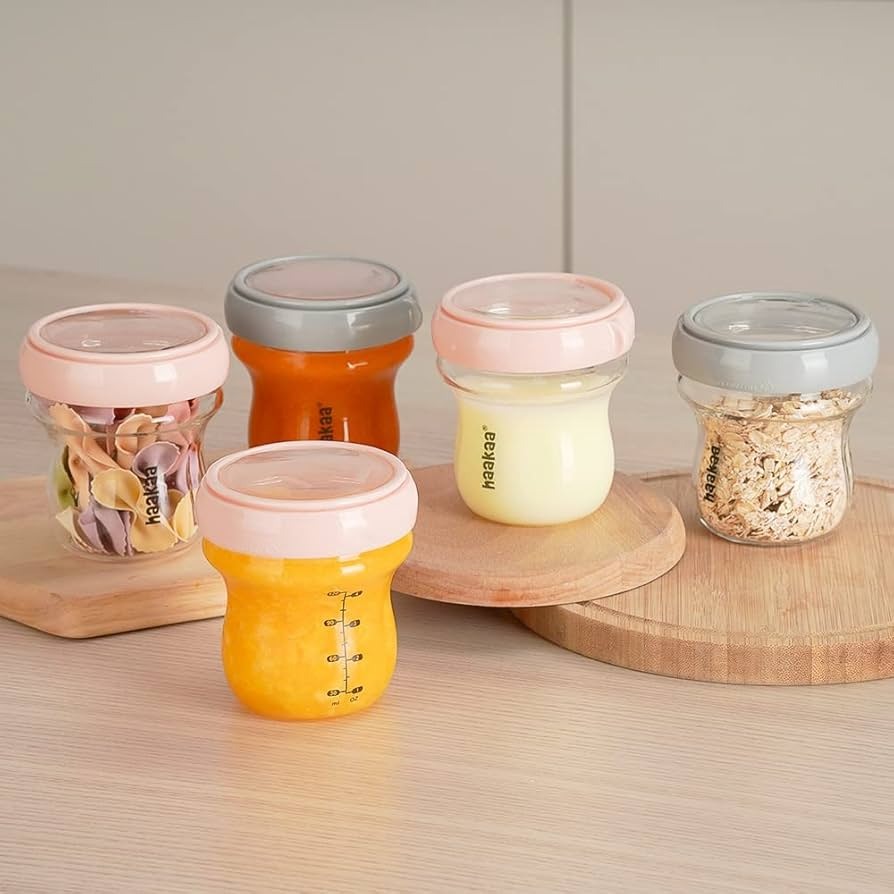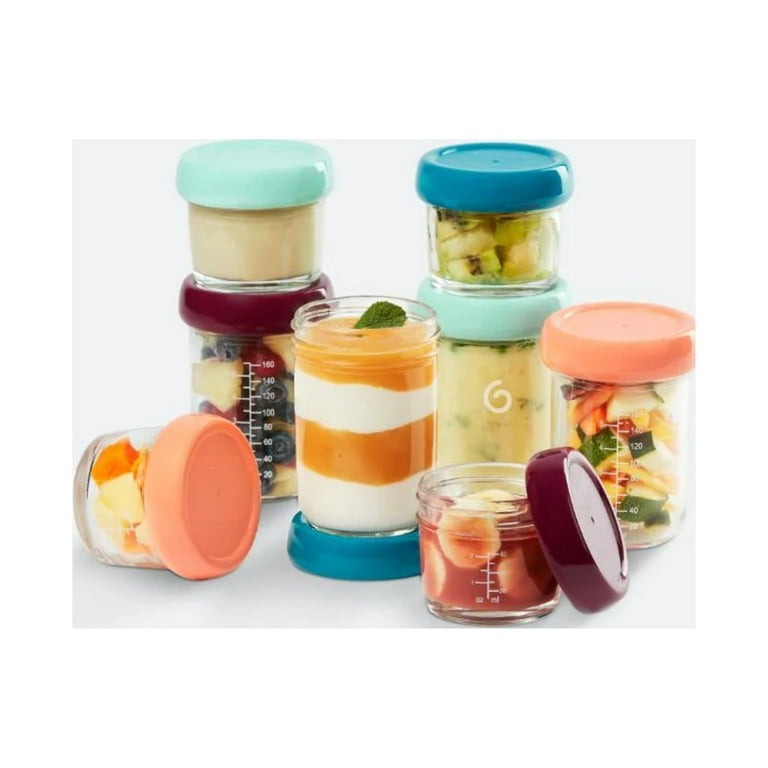Introduction to Storing Homemade Baby Food
Preparing meals for your baby at home can be both rewarding and economical. However, it’s crucial to store these nutritious purees properly to ensure they remain safe and retain their quality over time. Whether you refrigerate or freeze your homemade baby food, understanding the best practices is key to maintaining its freshness and preventing foodborne illnesses.
Homemade baby food, unlike store-bought varieties, does not undergo industrial sterilization. This means that it can spoil more quickly and requires careful attention when it comes to storage. By following specific guidelines, you can extend the shelf life of the food and provide your baby with delicious, healthy meals without the risk of contamination.
In this section, we’ll explore essential tips on how to store homemade baby food safely, from choosing the right storage containers to recognizing signs of spoilage. With these insights, you can confidently prepare and store meals that support your baby’s growth and development.
Essential Storage Guidelines for Homemade Baby Food

Ensuring the safety and quality of homemade baby food involves more than just preparation. Proper storage is crucial for maintaining freshness and preventing the growth of bacteria. Here are three key guidelines to follow when storing your baby’s meals.
Refrigerating Homemade Baby Food
Homemade baby food should be cooled rapidly and placed in the refrigerator within two hours of cooking. Use shallow, airtight containers to support quick cooling and to minimize exposure to air. Most homemade purees will keep for 24 to 48 hours in the fridge. Keep your refrigerator temperature at or below 40 degrees F to inhibit bacterial growth.
Freezing Homemade Baby Food
For longer storage, freezing is an excellent option. Portion purees in ice cube trays or small containers for easy thawing. Once frozen, transfer the cubes to freezer bags to save space. Label each bag with the date and type of food. Thaw only what you’ll use to avoid waste. Purees can last up to 1 to 2 months in the freezer.
Shelf Life of Homemade Baby Food
Freshness and safety are crucial when feeding your baby. Meat, poultry, and fish should be consumed or frozen within a day. Vegetable and fruit purees can be refrigerated for 48 hours or frozen for a month. Always keep an eye out for signs of spoilage, such as off-odors or discoloration, and discard any food that seems compromised.
Best Containers for Storing Baby Food
Choosing the right containers for storing homemade baby food is essential. Here are the safest options.
Glass vs. Plastic Containers
When it comes to selecting containers, both glass and plastic have their advantages. Glass is free from chemicals and is often recommended. Make sure they’re labeled as ‘freezer-safe’ if you plan to freeze the food. Plastic containers are lightweight and won’t break easily. Use only BPA-free plastic containers to ensure safety.
Using Ice Cube Trays for Portion Control
Ice cube trays are perfect for portioning baby food into small, easy-to-use servings. Cover trays with plastic wrap before freezing to protect the food. After freezing, move the baby food cubes into freezer bags, noting the food type and date. Remember, larger portions may take longer to thaw, so small cubes are ideal.
Thawing and Reheating Baby Food Safely

Proper thawing and reheating of homemade baby food is essential for safety and quality. Here are effective methods to handle your baby’s food correctly.
Thawing Frozen Baby Food
Start by planning ahead. Transfer the needed portion of frozen baby food to the refrigerator the night before use. This slow thawing process helps maintain the quality of the food. For a quicker method, place the frozen puree in a bowl of warm water for 10-20 minutes. Always avoid thawing baby food at room temperature to prevent bacterial growth.
Safe Reheating Techniques
Once thawed, baby food can be reheated on the stovetop or in the microwave. For the stovetop method, use low heat and stir often until the food is warm throughout. If using a microwave, heat the puree in short intervals, stirring in-between to ensure even heating. Always test the food’s temperature before feeding it to your baby to avoid burns.
Preventing Contamination and Ensuring Freshness
Keeping your homemade baby food fresh and safe is crucial. Here are tips to avoid contamination.
Understanding the Risk of Bacterial Growth
Bacteria can quickly grow in baby food if not stored right. Store food promptly to reduce this risk. Keep your fridge at 40 degrees F or below to prevent bacteria from multiplying. Never leave baby food out at room temperature over two hours.
Tips to Prevent Food Contamination
To keep baby food safe, follow these helpful tips:
- Cool down cooked food swiftly before storing it.
- Divide food into small portions for quicker cooling.
- Use clean, airtight containers for storage.
- Never re-use spoons when feeding to avoid saliva contamination.
- Always wash your hands before handling baby food.
By applying these simple tips, you can ensure your homemade baby food is fresh, safe, and ready for your baby to enjoy.
Shelf Life of Homemade Baby Food
Understanding the shelf life of homemade baby food is crucial for maintaining its safety and nutritional value. Here are guidelines on how long you can store different types of baby foods and signs to watch for that indicate the food has spoiled.
Storage Duration for Various Types of Baby Foods
Homemade baby foods vary in their storage lives depending on their ingredients:
- Meat, poultry, and fish should be used or frozen within 24 hours.
- Vegetable and fruit purees can be safely refrigerated for up to 48 hours or frozen for up to one month.
Always use airtight containers and keep your refrigerator at or below 40 degrees F to maintain freshness.
Signs That Baby Food Has Spoiled
It is important to recognize when homemade baby food has gone bad:
- Discoloration: Any unusual changes in color can indicate spoilage.
- Off-odors: If the food smells sour or unpleasant, it should be discarded.
- Visible mold: Any signs of mold mean the food should not be consumed.
Discard any homemade baby food that shows these signs, to ensure that your baby’s meal is safe and healthy.
Additional Tips for Managing Baby Food Storage

Keeping homemade baby food organized can save time and reduce waste. Here are some additional tips.
Labeling and Organizing Baby Food
Always label containers with the food type and date made. Use clear labels and waterproof markers. Keep newest batches behind older ones in the fridge or freezer. This way, you use the oldest food first and keep things organized. Group similar foods together to find meals quickly.
Utilizing Freezing and Thawing Charts
Create or download charts that list how long to store different types of baby food. Post these charts near your storage area for quick reference. These guides help prevent using food past safe dates. Remember, different foods have different freezer lives. Meats typically last 1 to 2 months, while fruits and veggies can last up to 6 to 8 months.
Alternatives to Freezing and Fresh Storage Solutions
- Refrigeration Basics: While freezing is ideal for long-term storage, refrigeration is suitable for short-term needs. Store pureed or freshly prepared baby food in the refrigerator for up to 48 hours, ensuring it remains fresh and safe.
- Exploring Canning Options: Although less common due to the complexity, canning can be a viable method for storing homemade baby food. Pressure canning is required for safe preservation, particularly for low-acid foods, and significantly extends shelf life.
- Utilizing Dehydration Techniques: Dehydrating fruits and vegetables can provide convenient and portable snack options for older babies. Store dehydrated products in airtight containers to maintain their texture and flavor.
- Lactation and Milk Storage: If combining homemade baby food with expressed breast milk, familiarize yourself with appropriate storage practices for milk. Use dedicated containers for milk and observe strict hygiene standards to ensure the combined meal’s safety.
By following these comprehensive strategies, you can effectively manage how to store homemade baby food, ensuring it remains nutritious and delicious for your little one. Adopting these practices not only promotes your baby’s health but also makes feeding time more convenient and enjoyable for you.